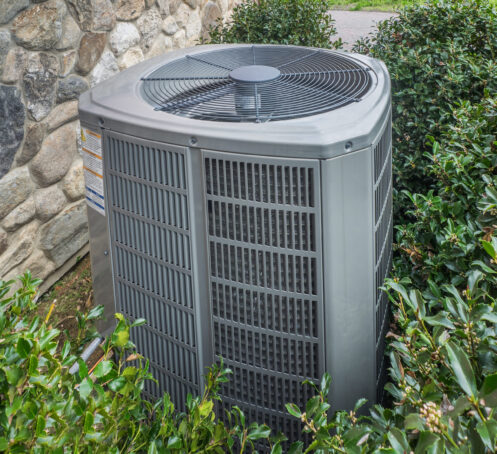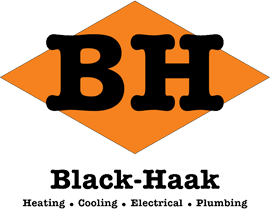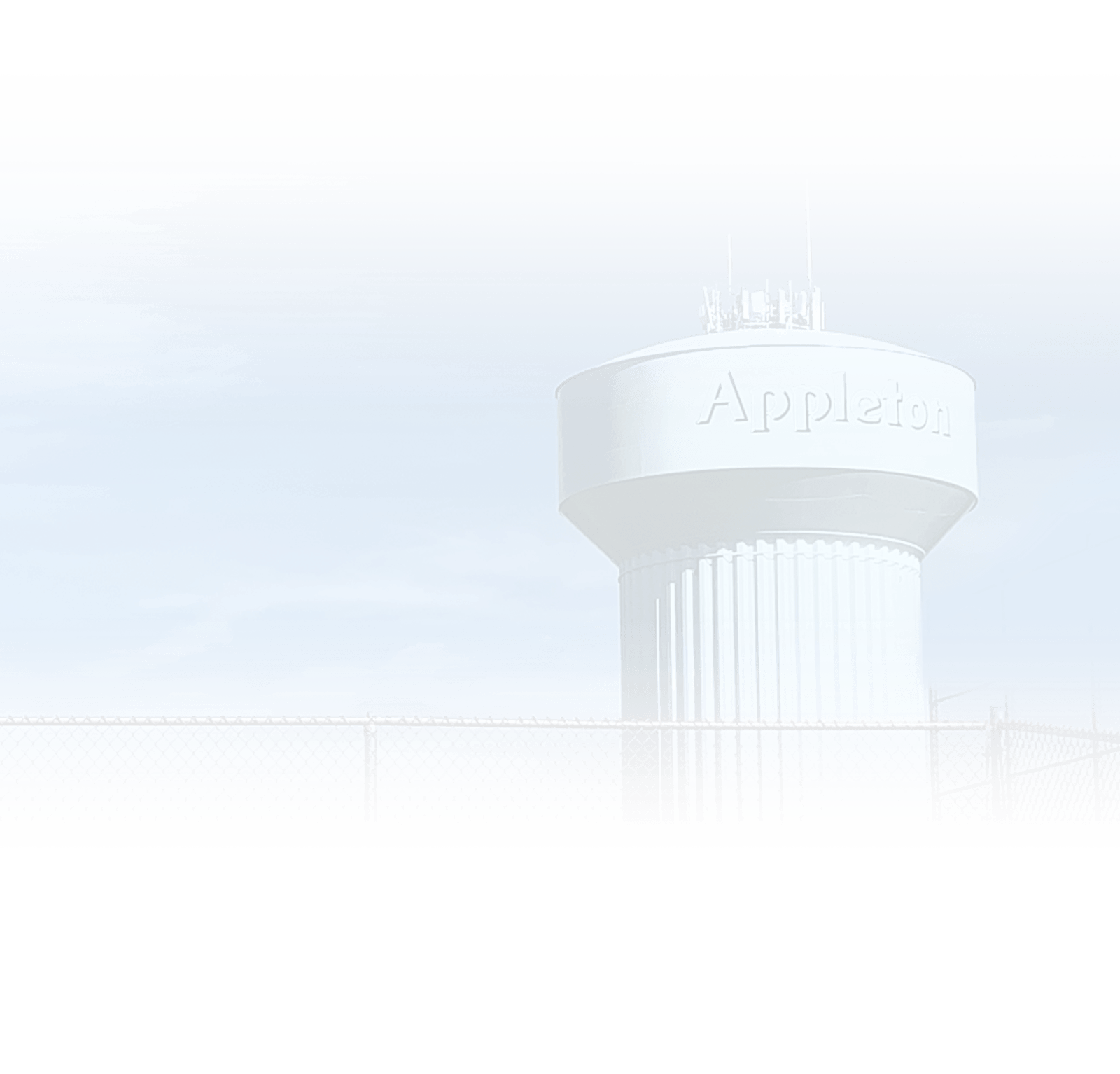
Is the HVAC system in your Greenville, WI, home suddenly starting to smell bad? Unpleasant odors coming from an HVAC system are a fairly frequent problem that can happen for a few different reasons. This article will explain the issues that can cause HVAC odors and how you can overcome and prevent them.
Mold and Bacteria Growth on an AC Evaporator Coil
Central air conditioning systems that use a traditional AC or a heat pump often smell musty and moldy. The reason for this is that the AC evaporator coil inside the unit can promote the growth of bacteria and mold because of ongoing condensation. Mold, algae, and bacteria often grow inside the drain pan underneath the evaporator coil and in the condensate drain lines as well. This further contributes to bad odors.
Having the evaporator coil cleaned as part of your annual AC maintenance can often help. However, the main purpose of this service is to remove any dust or debris that is present. A dirty evaporator coil is much more likely to freeze up. There are also anti-fungal drain pan tablets that can help prevent mold and algae in the pan and condensate lines. Still, the best solution for overcoming and preventing bad odors caused by mold and bacteria on the evaporator coil is to install a coil-sanitizing UV light.
Ultraviolet light is one of the most powerful germicides known to man, which is why it is used to sanitize hospital and laboratory equipment. When microorganisms like mold spores, bacteria, and viruses come into contact with UV light, their DNA is irreparably altered. This effect doesn’t necessarily kill the microorganisms, but it does make it impossible for them to spread and multiply.
Coil-sanitizing UV lights are meant to be installed directly above the evaporator coil so that the ultraviolet rays shine straight down onto it. As soon as the unit is installed, it will quickly eliminate any mold and bacteria growth on the coil. The light will also stay on 24 hours a day throughout the entire air conditioning season. This ensures that no new mold or bacteria can form. This means the UV light will quickly get rid of nasty odors and prevent them from returning.
UV light can also help improve the air quality in your home. It can make your air conditioning more effective and energy efficient by reducing mold and bacteria that are forming a coating on interior coils and parts. This buildup can result in the AC coil not capturing as much heat, leading to the system cooling more slowly. Energy consumption increases, as do your utility bills.
Dirty or Moldy Ductwork
Dirty and moldy ductwork can make the air produced by a central air conditioning or heating system smell musty. Pests like mice and cockroaches also like to nest inside air ducts. When this happens, some of the pests may inevitably die and give off a rotten smell. This issue is why experts recommend getting your ducts professionally inspected when you’re dealing with a pest infestation on your property or in your home. If any pests were nesting in your ductwork, having them professionally cleaned should eliminate the smell and improve indoor air quality. Experts also recommend having your ducts cleaned at least once every three to five years. This process can improve the efficiency of your HVAC system by promoting better air flow and reducing the number of particulates inside your furnace.
Dust, lint, hair, and other debris slowly accumulate inside a duct system over time. The problem is always worse if the ducts are old and leaky. All of this debris creates resistance that makes it more difficult for air to circulate through the ducts smoothly. This resistance reduces the volume of air that the HVAC system can circulate. For an HVAC system to function efficiently and effectively, there always has to be a specific volume of air circulating through it. If the system isn’t moving enough air, it will heat or cool more slowly. This decreases energy efficiency but also leads to increased wear and tear, leading to a decrease in a system’s life.
Some homes have issues with mold growth inside their air ducts because of a lack of insulation. If ducts aren’t insulated, the temperature difference between the air flowing through them and the surrounding air often leads to condensation forming. If there is condensation in the ducts, mold can start growing in a matter of days. In this situation, you will need to have your ducts cleaned to eliminate the mold. The rest of your home should also be inspected for signs of mold spores. Ductwork should then be insulated to prevent condensation from forming. Leaky ducts are more prone to condensation, so you may also need to have your ducts resealed.
Faulty or Cracked Furnace Heat Exchanger
There are situations where a central heating system with a furnace will produce a strong chemical odor similar to formaldehyde. If you notice this type of smell when your furnace runs, you should take immediate action. This smell often indicates that the furnace’s heat exchanger is cracked or faulty. A bad heat exchanger is the worst problem a furnace can have and makes it unsafe to use.
If there is even a small crack in the heat exchanger, it will allow carbon monoxide and other harmful fumes to escape and leak out into the ductwork. As the heating system runs, it will then spread the fumes to every part of the home. This creates an extreme risk of potentially fatal carbon monoxide poisoning. While carbon monoxide is odorless, there are usually other smells that accompany a problem. This is why you should immediately shut off your furnace if you notice a chemical smell. Then, contact an HVAC company for an inspection.
Heat exchangers can crack or fail simply due to wear and age, but it more commonly happens due to a lack of maintenance. If your heating system is poorly maintained or you don’t replace the air filter often enough, your furnace may start overheating. This leads to the metal heat exchanger expanding more than normal, causing it to crack when it contracts as it cools down.
Sometimes a heat exchanger breaks due to a defect in the manufacturing process. This is typically the only time that the issue will be covered by your warranty coverage. Because replacing a heat exchanger is difficult and extremely time-consuming, it is a costly furnace repair. In most cases, you’ll end up paying close to the same price to simply install a new furnace as you would to replace the heat exchanger.
If your HVAC system smells bad or isn’t working effectively, you can trust the team at Black-Haak to help. We offer professional heating and cooling repairs, maintenance, and installation. We also offer exceptional indoor air quality services in the Greenville area. For more information on your options for eliminating HVAC odors or if you need any HVAC, plumbing, or electrical service or repairs, contact us today.

